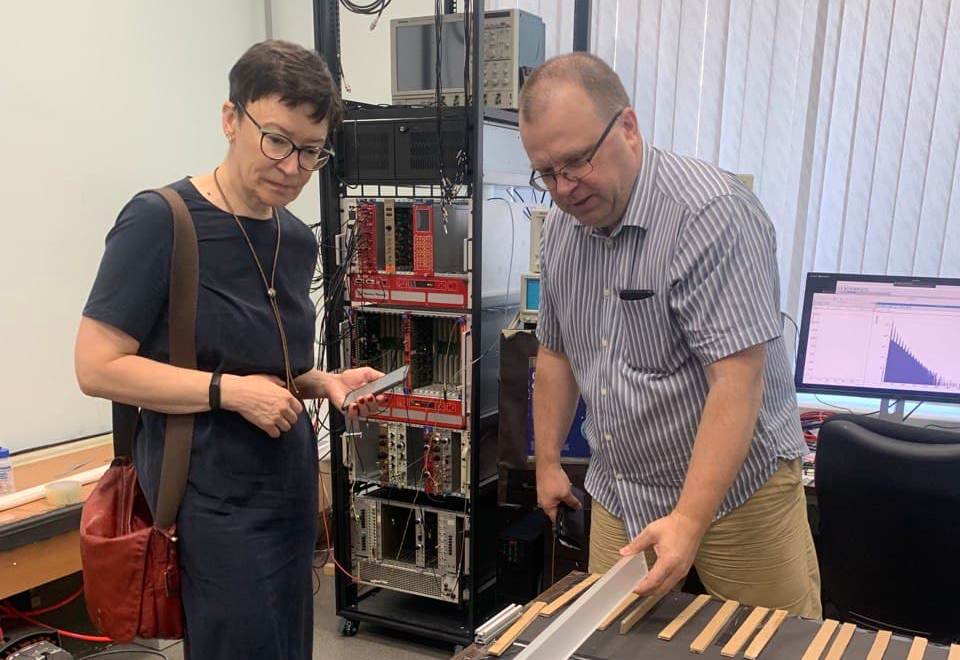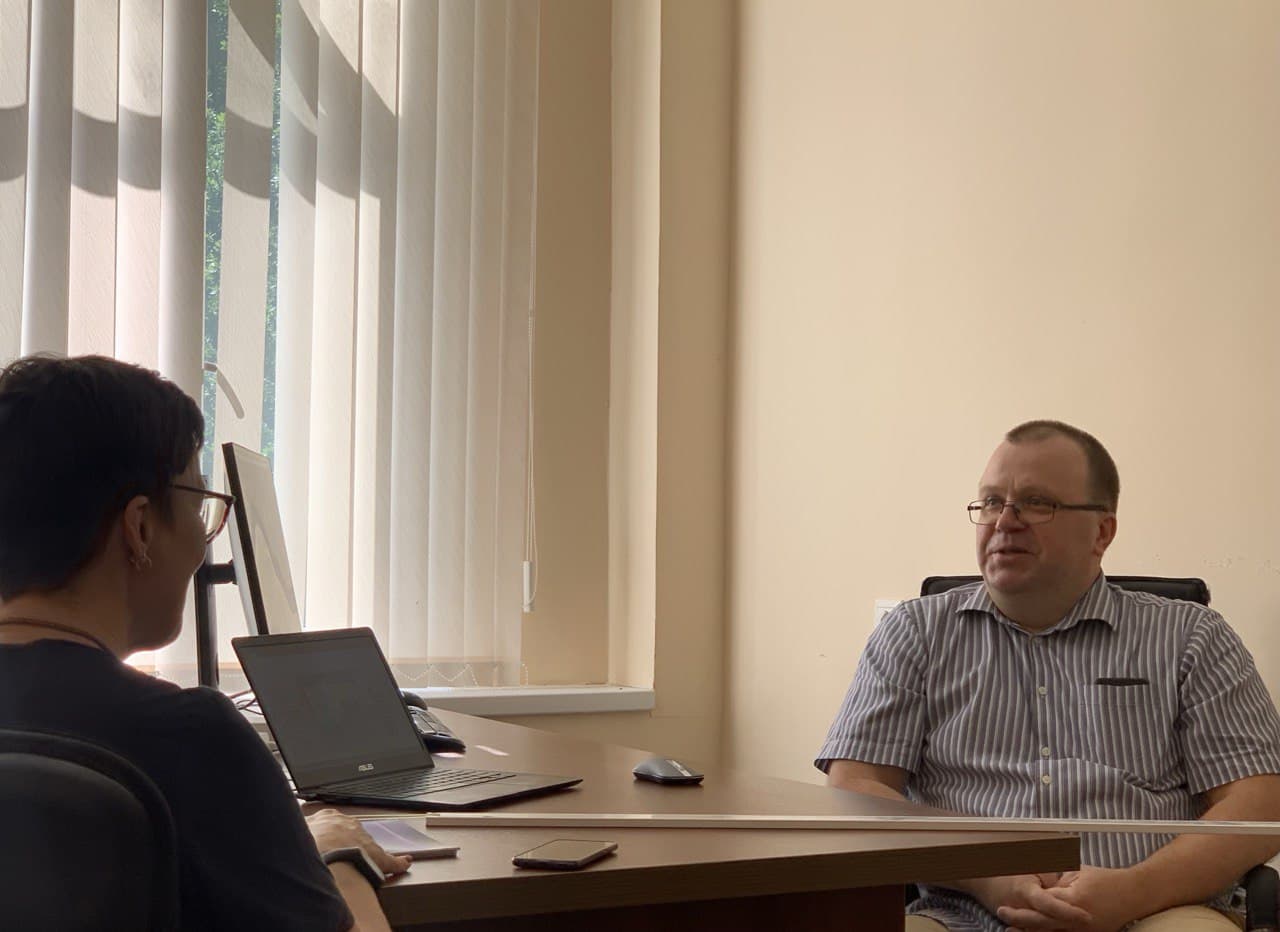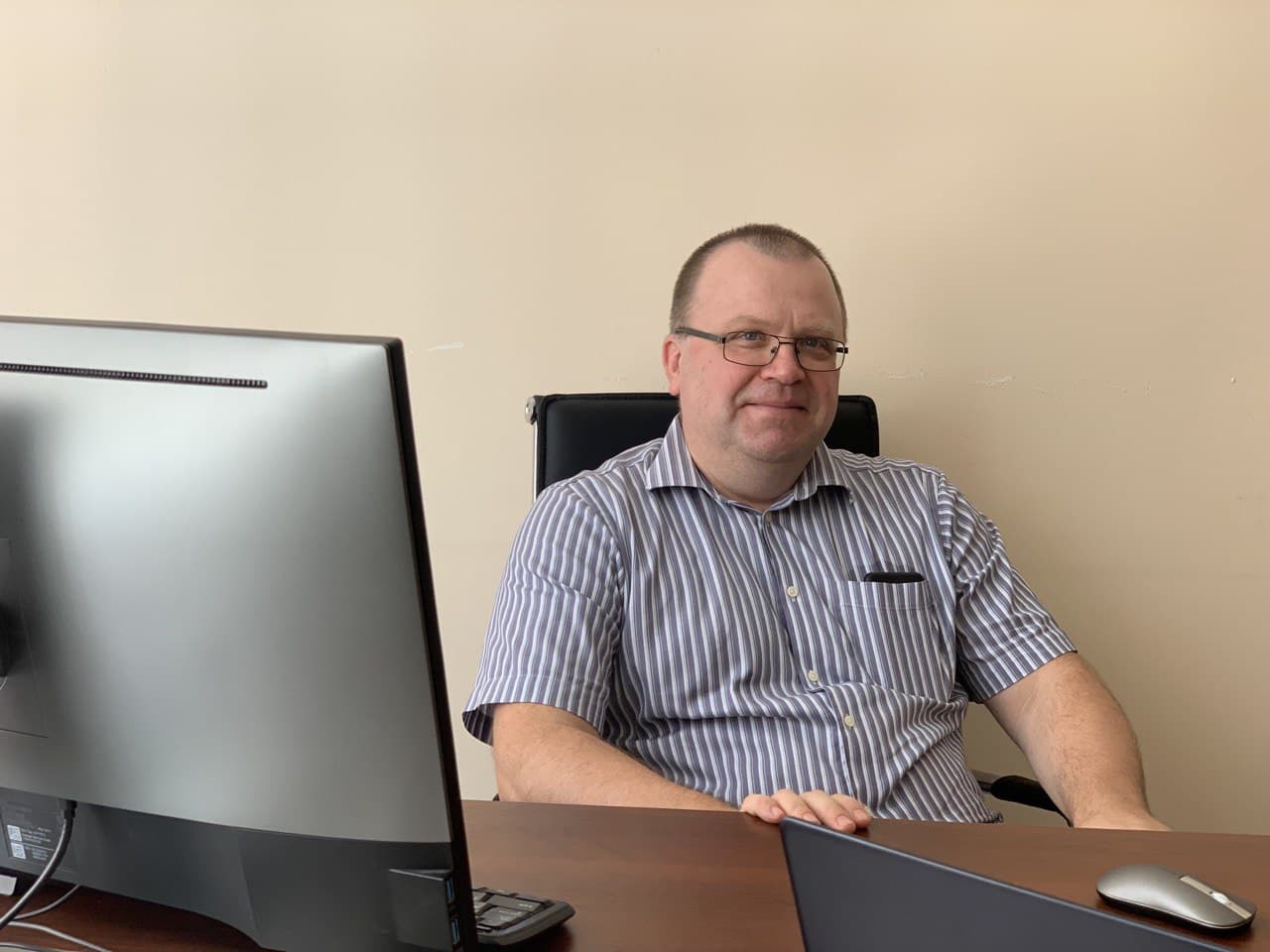Upgrade of the Facility of the DANSS Experiment
The DANSS facility to study reactor antineutrino fluxes is located in the heart of the Kalinin Nuclear Power Plant (KNPP), several metres away from the reactor core. DLNP physicists investigate neutrino oscillations and search for sterile neutrinos whose possible existence is indicated by recent calculations of French researchers.
Not long ago, a previously scheduled upgrade of the facility started which will allow increasing its efficiency and gaining new results in one of the most promising fields of modern physics.

The DANSS group leader at JINR, the head of the Section of Weak Interactions of the Experimental Department of Nuclear Spectroscopy and Radiochemistry (EDNSR) Yury Alexandrovich Shitov told the DLNP Group of Scientific Communication about how the upgrade is going on.
 Yury Shitov and Mariya Pilipenko | DLNP
Yury Shitov and Mariya Pilipenko | DLNP
At present, the DANSS facility is a spectrometer with a volume of one cubic metre. The device is made up of scintillator strips with dimensions of 1 m x 4 cm x 1 cm. The advantages of present-day strips are simplicity and low production cost. From 2016 to 2020, the facility, based on these scintillator strips, accumulated a large dataset which included almost four million neutrino events, about one million neutrinos a year. However, to handle new tasks, the strip sensitivity is insufficient.
Now, workpieces for new advanced strips are being delivered to EDNSR. There will be one and a half thousand strips in total. The length is 1.2 m. The manufacturing is more complicated. First, solid blocks are made of plastic scintillator — the Institute of Physicotechnical Problems fabricates (founds) them at the JINR site, and then these blocks are cut into individual pieces and machined. The pieces are checked at a special test bench at EDNSR.
Later, future strips are transported for chemical dull polishing to a plant in Vladimir. Additionally, thin films of gadolinium will be placed between strip layers. Gadolinium has the largest neutron capture cross section compared to all elements of Mendeleev’s periodic table. When a reaction proceeds in the scintillator, the produced neutron is captured by gadolinium. As a result, a flash of three−four gamma-quanta occurs. It is also detected by the facility, which enhances the sensitivity of the detector. The idea to use gadolinium films was introduced by DLNP researchers.
 Yury Shitov | DLNP
Yury Shitov | DLNP
Then, grooves for optical fibres will be made in the strips. After that, the strips will be returned to DLNP or delivered to the Institute of Theoretical and Experimental Physics. Light collection fibres and individual SiPM detectors made in Japan will be added to them.
The detectors are delivered in batches as soon as they are manufactured. The new technology of optical module production for the upgraded DANSS facility (stripes + fibres + SiPMs) ensures a high light yield because the signal is four times higher.
After the strip manufacturing is completed, a preliminary, so-called “dry assembly” of the new strip spectrometer will be conducted at EDNSR to test its performance. It should be done here because of the specific working conditions at the nuclear power plant where preliminary tests and minor upgrades of the detector are difficult and inconvenient to conduct: a small room, strong safety rules, a complicated approval procedure to get all necessary spares delivered. After the checkup at EDNSR, the device will be taken apart and transported to the KNPP where it will be reassembled and connected to the DANSS facility.
 Yury Shitov and Mariya Pilipenko | DLNP
Yury Shitov and Mariya Pilipenko | DLNP
The updated structure and the larger strip size will make it possible to increase the effective volume of the facility and to detect more events with a higher precision because of the better-quality neutrino signal (spectrum).
The above-mentioned technological processes will proceed in parallel to speed up the upgrade completion. It is crucial that all the other facility components, e. g., shielding and electronics, remain the same. One of the ideas behind the upgrade was to keep the original units of the facility to the maximum, which allows the scientists to avoid new long-lasting approval procedures, to reduce the upgrade cost and to launch research as soon as possible.
And every day counts for commissioning of the upgraded facility. At present, several competing collaborations are studying reactor neutrinos and searching for sterile neutrinos.
We wish our colleagues to complete the facility upgrade according to the schedule and to launch a new stage of promising scientific research as soon as possible!
To get to know the DANSS project in more detail, read the article “Out of the heart of the reactor” by Mark Shirchenko and Yury Shitov.

